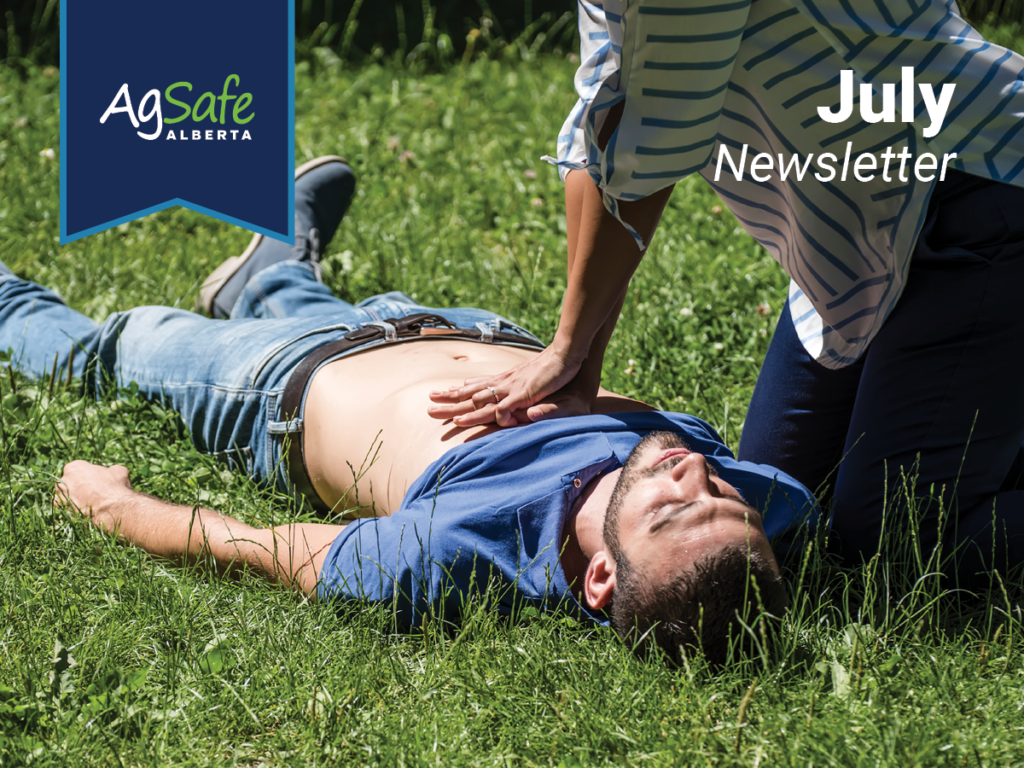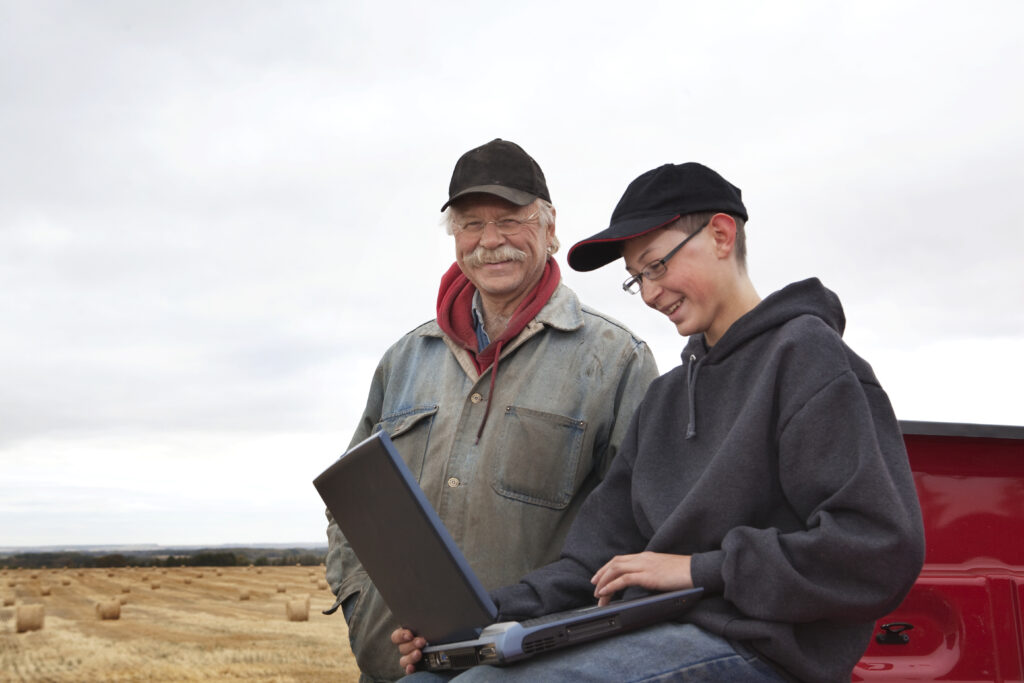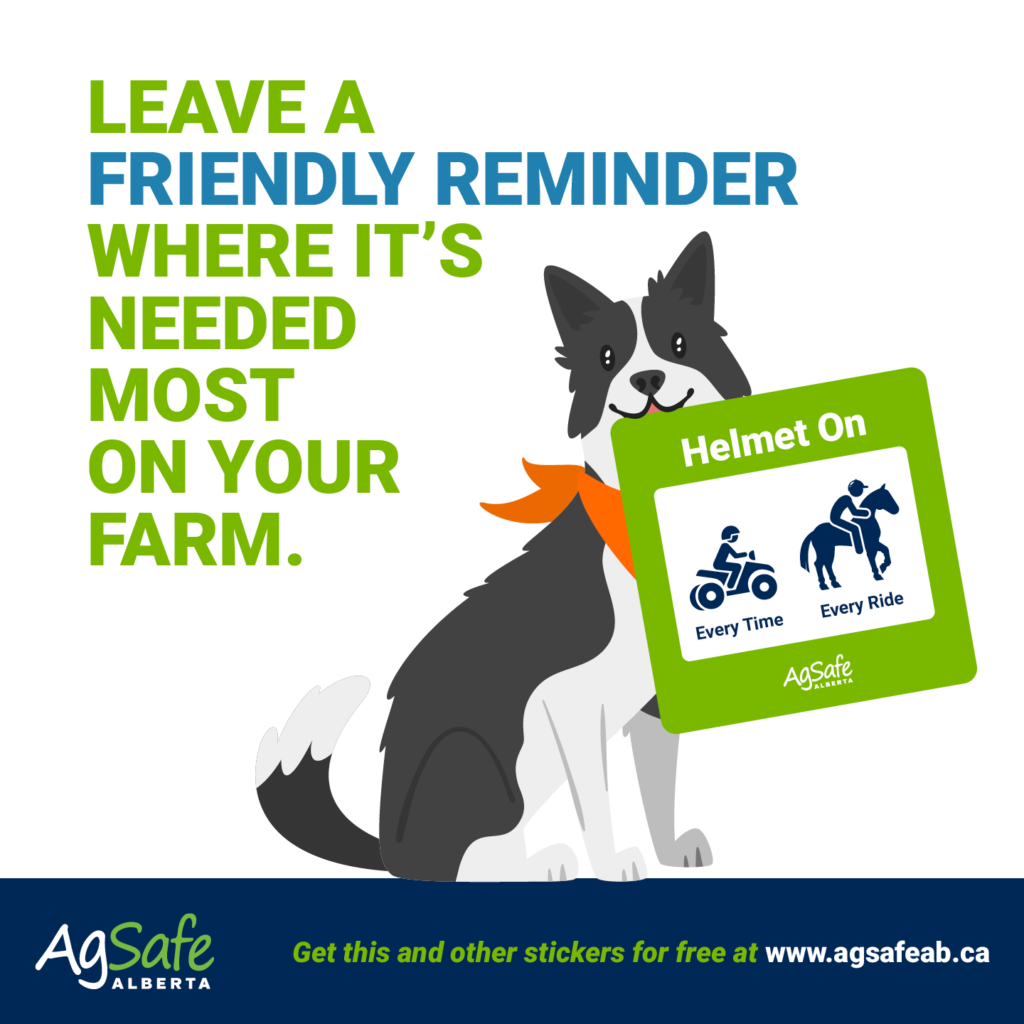
It Happened to One of Us
According to one Canadian study, someone who has a cardiac arrest event in an urban center is 107% more likely to survive than their rural counterpart1. Sudden cardiac arrest events in rural areas are not uncommon and can even happen to young and seemingly healthy individuals, like Kim Ruether’s 16-year-old son, Brock.
Kim Ruether grew up on a farm near Worsley, Alberta. She went on to further her education in the field of health care as a diagnostic imaging technologist and upon returning to northern Alberta, she married Wayne. The couple bought a farm near Fairview, had two daughters and two sons, and even won the Alberta Outstanding Young Farmers title in 2002. Life was good… that is, until May 22, 2012.
That day, Brock Ruether went to town to attend a volleyball practice at his school. While at the practice, he experienced a sudden cardiac arrest event. He collapsed on the floor of the gymnasium and a call was placed to 9-1-1. While the Emergency Medical Dispatcher told the caller to get the Automatic External Defibrillator (AED) located at the gym doors, no one was instructed (or recognized the need) to use it. Emergency Medical Services (EMS) arrived over 13 minutes after Brock’s collapse, but it was too late. At 8:45 p.m., Brock was pronounced dead by the attending physician.
Despite her grief, Kim recognized the points where this tragic outcome may have been changed and did something about it. She founded the Project Brock Society, became an associate of Project ADAM, is a lifetime member of Parent Heart Watch and is on the Alberta Health Services EMS Scientific Research Team. Kim volunteers and travels to promote the availability and rapid use of AEDs in cardiac arrest events and has trained thousands of children (as young as 5 years old) and adults in Basic Life Support (BLS) skills.
If your colony, group, or rural school is interested in receiving AED and CPR training at no cost through the Project Brock Society, you can contact Kim Ruether directly via email at kimruether@hotmail.com or by telephone at 780-835-1751.
Project Brock
Government of Alberta Approved First Aid Training Agencies
1. Connolly, Michael S. et al. (2021, December 30). Urban-Rural Differences in Cardiac Arrest Outcomes: A Retrospective Population-Based Cohort Study. Canadian Journal of Cardiology. Accessed 2023, June 15 from https://www.ncbi.nlm.nih.gov/pmc/articles/PMC9039571/.
Young Worker Considerations

Farms all across Alberta are filled with young workers; they can be children of the owners/operators or even hired help. A young worker is defined as someone under the age of 25 years, and these young people have special considerations that need to be taken into account before work is assigned to them. For example, the part of the brain responsible for good judgement and an awareness of long-term consequences isn’t fully developed until around 25 years of age; up to this point, information is often processed using the part of the brain associated with emotions2.
What this means is that any work you assign to youth on your farm must be matched to their developmental level and abilities. The National Children’s Center for Rural and Agricultural Health and Safety (NCCRAHS) has developed guidelines to support you in doing this. To view these guidelines and learn more, visit cultivatesafety.org/work/ .
2. Campellone, J. and Kent Turley, R. (n.d.). Understanding the Teen Brain. University of Rochester Medical Center. Accessed 2023, June 20 from https://www.urmc.rochester.edu/encyclopedia/content.aspx?ContentTypeID=1&ContentID=3051#:~:text=The%20rational%20part%20of%20a%20teen%E2%80%99s%20brain%20isn%E2%80%99t,with%20the%20prefrontal%20cortex%2C%20the%20brain%E2%80%99s%20rational%20part.
Young Worker Injury Statistics
According to the Government of Alberta3, young workers make up 12% of the labour force yet have the highest disabling injury rates of all age groups. Other findings included:
- Most of the disabling injuries occurred in young males.
- 20% of injuries related to overexertion, 17% resulted from being struck by an object and 14% were caused by falls.
- Young workers are at higher risk for injury due to:
- Inexperience.
- Lack of adequate training.
- Increased exposure to dangerous jobs.
3. Government of Alberta, Labour. (2022, September). Workplace Injury, Illness and Fatality Statistics Provincial Summary 2020. Open.alberta.ca. Retrieved 2023, June 20 from https://open.alberta.ca/dataset/4fb90b70-7660-4553-98fc-a59574f8fd5a/resource/8d783536-2136-4666-8cef-636c26ada677/download/lbr-workplace-injury-illness-and-fatality-statistics-provin%02cial-summary-2020.pdf.
Transporting Someone To Hospital: Do You Have A Plan In Place & Ready To Act On?

The transport plan must:
- Be suitable for the distance to be travelled and the types of illnesses or injuries that may occur.
- Include measures to protect persons from exposure to the weather.
- Ensure vehicles are readily available and can accommodate a stretcher and an accompanying person.
- Include systems that allow for communication with the health care facility where the ill or injured worker is being taken.
- If a worker is ill or injured and needs to be accompanied during transport to a health care facility, the prime contractor (or, if there is no prime contractor, the employer) must ensure the worker is accompanied by at least one first aider, in addition to the operator of the transportation (this does not apply if there are three or fewer workers at the work site at the time).
Check out and use AgSafe Alberta’s customizable Worksite Emergency Transportation Plan.
Government of Alberta: First Aid in the Workplace

ATV Safety This Summer

ATVs are useful in agriculture, but they can also be very dangerous. In fact, NIOSH has identified that the majority of work-related deaths involving ATVs in the United States occurs in agriculture4. This is concerning in Canada, as how they are used on farms and the work being done is very much the same.
Most ATV incidents result from1:
- Loss of control
- ATV rollovers
- Operators being thrown from the ATV
- Collisions with trees or other objects
- Operators not wearing helmets or other Personal Protective Equipment (PPE)
- Inexperienced operators
Ways to prevent ATV incidents include:
- Never allow untrained family members or workers to operate an ATV.
- Never allow anyone who is fatigued or impaired to operate an ATV.
- Follow the one seat, one rider rule. Do not allow extra riders!
- Install roll over protective structures (ROPS) or roll bars on ATVs.
- Ensure everyone knows what the hazards are and where hazards are (e.g., holes, stumps, fences, culverts, etc.).
- Ensure training includes how to operate an ATV in different conditions, different types of terrain and what appropriate speeds for these conditions and terrain are.
- Ensure training includes riding on slopes safely and what slopes are too steep to ride on.
- Install a toolbox so that tools and supplies are safely and securely stored.
- Ensure everyone is wearing their helmet and other appropriate PPE.
- Keep ATVs in good working order; check tire pressure, fluid levels, brake function, etc.
- Ensure everyone is clear on how to know when it is safe to cross a road and how to do it safely.
In case you missed it, check out our Toolbox Talk: All Terrain Vehicle (ATV) General Safety
4. Occupational Safety and Health Association. (n.d.). Agricultural Safety Fact Sheet: All-Terrain Vehicle Hazards. www.osha.gov. Accessed February 21, 2023 from https://www.osha.gov/sites/default/files/publications/OSHA3758.pdf . 2. Statistics Canada. (2021). Circumstances surrounding all-terrain vehicle (ATV) fatalities in Canada, 2013 to 2019. Accessed February 21, 2023 from https://www150.statcan.gc.ca/n1/daily-quotidien/210607/dq210607d-eng.htm

Children & Youth on ATVs
- In Canada, 25% of all ATV-related deaths occur in children and youth aged 15 and younger.
- Children and youth (19 and younger) also account for 34% of all ATV-related hospitalizations.
- Children and youth do not have the physical maturity to control a large, heavy ATV and they do not have the cognitive abilities to always make safe decisions and avoid danger.
- Ensure they are wearing appropriate safety equipment (e.g., helmet, eye protection, and safety clothing).
- Ensure they receive the appropriate training.
- Ensure anyone using an ATV is not under the influence of alcohol or other drugs.
- Avoid the use of ATVs between dusk and dawn due to reduced visibility.
5. Child Safety Link. (2020, November). ATV Safety. Childsafetylink.ca. Accessed 2023, June 20 from https://childsafetylink.ca/sites/default/files/inline-files/ATV-Backgrounder-Nov-2020-1.pdf.
Do More Ag Has Launched AgTalk!

The Do More Agriculture Foundation, commonly referred to as Do More Ag, has launched a new peer-to-peer mental wellness support platform for the purpose of acknowledging and providing support to producers. Do More Ag states “the platform will provide a safe and anonymous space where anyone involved in agriculture, aged 16 years and older, can share and receive support from a community of peers who relate to their unique experiences.” To learn more about AgTalk, go to: https://www.domore.ag/announcements/agtalk
CONTACT US
For general inquiries: info@agasafeab.ca /403-219-
For our hotline for incidence assistance: 1-833-9AGSAFE
